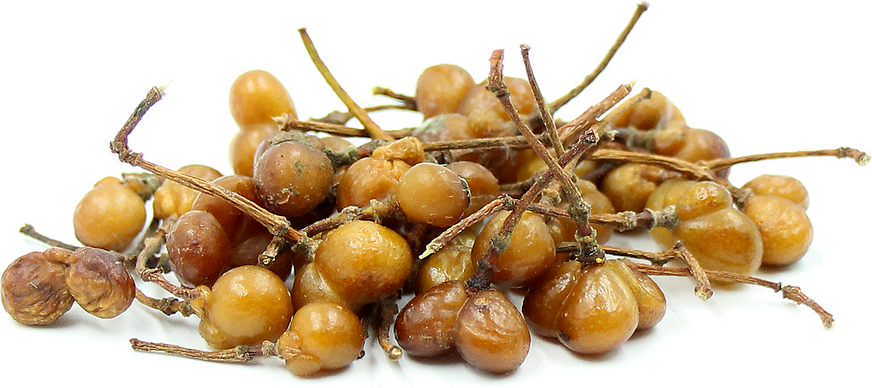


Brandy Bush Fruit
Estimated Inventory, bskt : 0
Description/Taste
Brandy Bush plants boast aromatic, star-shaped, yellow flowers which turn to fruits starting the mid-wet season. The fruits of the Brandy Bush plant are round and petite, measuring approximately a quarter inch in diameter. When mature their coloring turns from green to a muted red/orange-brown hue. Brandy Bush fruits offer a sweet and slightly astringent flavor. In addition to its fruit, the Brandy Bush plant is identifiable by its gray-green leaves which are covered in fine hairs and grow upright rather than downward drooping like many other plants of the Tiliaceae family.
Seasons/Availability
In South Africa, Brandy Bush fruits are ready to harvest mid-wet season through mid-dry season (between February and August.)
Current Facts
Brandy Bush fruit grows on the small tree or shrub botanically known as Grewia flava DC, a member of the Tiliaceae family. Also known as Velvet Raisin, the fruit of the Brandy Bush tree provides a valuable source of subsistence and food security in areas of rural South Africa where other crops have failed.
Nutritional Value
Brandy Bush plants are naturally high in sugar and provide a source of calories in the South African diet. The roots of the Brandy Bush plant are also ground up and combined with egg shells to make a topical treatment for burns.
Applications
Fruits of the Brandy Bush are edible whole as a snack food when fresh or when dried. The fruits which are high in sugar can also be fermented to make Kgadi-traditional beer, wine, and a brandy known as mampoer. The Brandy Bush fruits can also be dried and ground up to make porridge. The Tswana people make an esteemed Brandy Bush fruit delicacy by combining the mashed fruits with dried locust. A by-product of the Brandy Bush fruit, a potato like fungus known as Terfeza pfeilii also provides an important food source in South Africa. Brandy Bush fruits should be used within a few weeks of harvesting or dried and saved for use later.
Ethnic/Cultural Info
The fruit of the Brandy Bush is mentioned in many folktales of the Bushmen of Botswana. In addition to the fruits of the Brandy Bush plant the bark can be used to make baskets and ropes, the branches to make walking sticks, fighting sticks, and bows and arrows, and the twigs to make toothbrushes. The sticks of the tree, when pushed into the ground, are believed to provide protection against lightning strikes. The fruits of the Brandy Bush plant also provide a valuable feed for cattle, guineafowl, and game animals such as kudu and steenbok, particularly during the dry season.
Geography/History
The Brandy Bush is indigenous to South Africa, Botswana, Zimbabwe, and Swaziland. Plants can be found growing in deciduous woodland and bushveld growing regions. The Brandy Bush plant prefers sandy soils and is typically found growing under the shaded canopy of other indigenous African trees such as the Acacia erioloba. Once established trees exhibit some frost tolerance, during the first two years of growth, however, protection from extreme cold as well as from strong winds should be provided.




